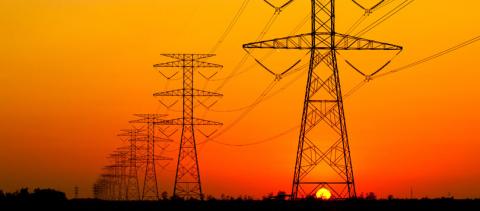
Energy sector experts, donors, and beneficiaries met in Abidjan, Headquarters of the African Development Bank to discuss lessons from independent evaluations of AfDB and World Bank energy sector interventions.
Drawing on evidence from two independent evaluations, stakeholders discussed concrete ways forward in the quest to overcome Africa’s energy challenges—focusing on what works, what does not work, and why. The backdrop for this discussion is the Sustainable Development Goals and the renewed determination to address Africa’s energy challenge once and for all.
Stakes Involved
Globally, 591 million of the 1.1 billion people who lack access to electricity are in Africa. Finding solutions to Africa’s energy challenge is central to the fight against extreme poverty because energy deficits affect all segments of society in Africa.
“Lack of energy is the most critical challenge facing Africa today…Africa can no longer wait. Just like blood is to the body, so is energy to the economy. An economy that has no electricity is only dying, slowly. Africa’s growth and prosperity depends on solving the crisis on energy,” AfDB President Akinwumi A. Adesina during a High-level Consultative Stakeholder Meetingon the New Deal on Energy for Africa which took place in Abidjan, Cote d’Ivoire in September 2015.
About the Evaluations
Independent Evaluation of AfDB Assistance in the Energy Sector
The energy sector has been a core priority of the African Development Bank for a while. Overall, it committed about UA 7.9 billion over the past 14 years to the sector, representing the third largest share in the Bank’s overall portfolio. Indeed, its energy portfolio increased by more than twentyfold from 2000 to 2013. Analysis of Bank support by subsector shows that the energy portfolio is largely dominated- about 52% of net commitments- by the power generation subsector. The Bank also invested a considerable amount in the national grid extension/upgrade subsectors. The combination of investment in both power generation and transmission infrastructure in a single project is another key type of Bank intervention that simultaneously aims at increasing affordability and accessibility of energy services, which is the third largest subsector. Relatively fewer investments have been made to support sector-wide and multi-sector operations.
Independent Evaluation at the AfDB is conducting a comprehensive evaluation of the Bank’s assistance in this sector to draw lessons for future interventions and identify what works, what does not work, and why. This will inform and optimize the Bank’s future strategic and operational directions in the sector. Does Africa still have to rely on fossil fuel energy sources? Is it still relevant to invest in a large-scale hydropower projects? What are the emerging trends in the energy sector, and how has the Bank responded to these trends and the results of such assistance? This evaluation will be completed in early 2016.
World Bank Group Electricity Access Evaluation
The WBG provided $63.5 billion to the electricity sector during FY00–14, about 9 percent of all WBG commitments.
IEG’s evaluation found that overall, associated development outcomes were favorable. But low access countries, particularly in Sub Sahara Africa were not particularly well served:
- Low-access countries received only 22 percent of World Bank, and 6 percent of IFC lending for the sector;
- Among 51 low access countries, the World Bank approved zero projects in 14 countries, only one project in each of 10 countries, and two projects each in 7 countries. IFC and MIGA had no activities in 29 and 43 countries respectively.
The evaluation recommends that the World Bank should engage decisively and focus intensively on countries with low electricity access; Move from a predominantly project-by-project approach—which lacks the requisite scale and speed – to a far greater use of a sector-wide organizing framework and process for implementing rapid access scale-up; and Design an investment financing platform led by government to crowd-in necessary financial resources from both public and private sources.

